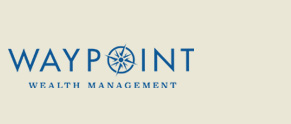What Are Three Ways That You (And We) Can Stay On Course?
We don’t expect people to fly their own airplanes or take out their kids’ appendixes, and yet we expect them to manage their retirement portfolios. In my careers I’ve done all three, and investing is by far the hardest.”
The Four Pillars of Investing
If we were to picture your retirement financial plan as an airplane flight, your investments are the trade winds carrying you toward your destination. How you invest can mean the difference between your arrival at your desired location … or it can knock you into a tail-spin.

To help you stay on course toward your own goals, we offer the “compass” of a solid investment strategy based on three key points. First, we have a strategy. Second, it’s a strategy based on reason and evidence guided by the durable science of capital markets. Third, it’s grounded in our fiduciary obligation to serve our clients’ highest financial interests.
Having a Strategy
By first having a clear strategy for managing the market’s ever-unfolding uncertainties, you can stay focused on the right processes, the right tools and the right mindset to guide you toward your most important goals.
As we’ll describe in a moment, we believe in the simple elegance of what we call evidence-based investing. You may also hear of it referred to as “passive investing.” Whatever you call it (and before we describe what “it” is), the first step in establishing a successful investment experience is to recognize the night-and-day difference it makes when you have a solid strategy to depend on during your life-long decision-making.
At the end of the day, to make money in the markets, you must buy low and sell high. But what should you buy and sell? And when should you act? With no overarching strategy, your choices become a random search in an immense financial desert. You may still find your way if you are lucky. But you may run out of gas before you do.
That’s a stressful way to go about managing your money.
Having a Strategy Built to Last
If your strategy isn’t built to last, then you may as well not have one to begin with.
The next step is to choose not just any strategy, but one you can apply with confidence through good times and bad. Investors are otherwise too often moved by volatile markets, veering off-course to chase skyrocketing trends or flee from precipitous drops, forever second-guessing themselves and “starting over” whenever current events test or tempt their resolve.
To that end, our investment strategy:
- Relies on the evidence. How have the markets actually worked in the real world? Decades of peer-reviewed inquiry by scientists and practitioners around the globe helps us continuously hone our understanding.
- Makes sense. The strategy you adopt should be intuitively logical – not only to financial economists but to you, too.
The Moving Parts
There’s a quiet power in understanding how to already be there to capture available market returns – rather than forever chasing after them, as most investors do.
While ongoing inquiry and new insights continue to add to our understanding, a core of essential tenets has emerged to withstand the critical tests of time and multi-disciplined scrutiny.
- The best way to capture market returns is to participate in expected long-term growth. This insight comes from the evidence indicating that functionally, markets are largely efficient as they drive our capital economy, delivering wealth to those that participate over time.
You can try to outperform others by speculating on individual securities or hot trends. But your odds are poor, to say the least. The added effort is not expected to deliver more than what the market already delivers to its body of participants. It’s far more likely to generate increased costs and complexities, eroding your ability to remain true to your own plans. Why go there?
Our Strategy: We want you to efficiently capture the market factors that are expected to contribute to your personal wealth over time. To do that, we’ll structure your investment portfolio plainly and sensibly – and explain it to you fully and openly– so you can stick with it throughout market risks and uncertainties.
- Because risk and reward are strongly related, they need to be deliberately managed to reflect your unique goals. While the market as a whole is expected to deliver wealth to its body of participants, clearly, there are individual winners and losers. The greater the expected return you seek, the more market risk you must accept … but only to the extent that it makes sense for your personal needs.
Are you still aggressively building wealth? Beginning to spend it down in retirement? Do you prefer to pass as much on to your family as possible? You want to strike a fitting balance between your needs to preserve the wealth you’ve achieved versus accumulating more over time.
Our Strategy: In accordance with your financial goals, we design your custom investment portfolio to expose you to an appropriate mix of market factors.
- We balance those factors expected to earn less but perform more reliably, with those that are expected to be a wilder, but higher-returning ride.
- Your asset mix can include stocks versus bonds, as well as stocks that exhibit particular factors (such as those representing value versus growth companies, small-company versus large, and developed versus emerging economies).
- The right mix depends on your particular circumstances within the cycle of your life-long investment journey.
- Diversification helps dampen market risk. Diversification is another potent ingredient in managing market risk. Through broad and deep diversification (i.e., not just holding a number of securities but ensuring they are spread among a number of market factors), the sum of your whole risk can actually be lower than its individual parts.
Our Strategy: First, we allocate your assets among various market factors, as described above. Then, within each factor, we spread your assets among thousands of individual securities. To accomplish this, we turn to a handful of providers who manage their mutual funds according to the same strategy we espouse: most notably, Dimensional Fund Advisors. Their practical, low-cost solutions allow us to apply sound financial theory to your investment activities.
Cost Management and Fiduciary Care
Cost management is among the most important ways we fulfill our fiduciary relationship with you – and one of the biggest ways we stand apart from most other financial services.
An undercurrent throughout our investment strategy is the notion (based on copious academic findings) that eliminating unnecessary expenses is one of the best – and arguably most obvious – ways to make the most of your investment opportunities. After all, any dollar spent in a wasted effort is a dollar you don’t get to keep for yourself.
And yet, consider this:
- The largest swath of the financial community earns its living on the commissions made when you place trades or when you move your money from one product to the next – whether or not that makes any sense for you.
- Many others build their financial business by selling complex products such as high-cost annuities and privately traded securities that require extreme, buyer-beware scrutiny. These risk-laden products and their hidden costs may or may not reward you, but they almost certainly will reward those who sell them.
Given the conflicting incentives found along the food chain of financial market players, it’s no wonder there’s so much misleading information filtering down to you, especially when it comes to costs you don’t need to incur.
Our Strategy: As a Registered Investment Advisor firm, we are obligated to serve as your fiduciary advisor, strictly representing your highest financial interests. As such, we maintain a constant eye toward aggressively eliminating unnecessary costs on a number of fronts, as well as fully disclosing those that remain, so you can feel good that we’re putting your interests first.
A Strategy to Lead the Way
Now that you know those essentials, the next step is to turn them inward. Has the bulk of your portfolio traditionally been kept aloft with attempts to move in and out of the market, its sectors or particular stocks? Are you always rushing to catch up with rapidly moving returns or constantly worrying about bypassing what you see as turbulence ahead?
Advancing instead according to the science of investing is the equivalent of turning your craft around and gliding with rather than against the powerful winds of trade toward your desired destination. With all this in mind, we look forward to continuing to help you safely travel toward your destination—wherever that may be—with as much financial peace of mind as possible.
Investments and diversification involve risk and unless otherwise stated, are not guaranteed. Be sure to first consult with a qualified financial advisor and/or tax professional before implementing any strategy discussed on this or any other newsletter.

Posted by:










